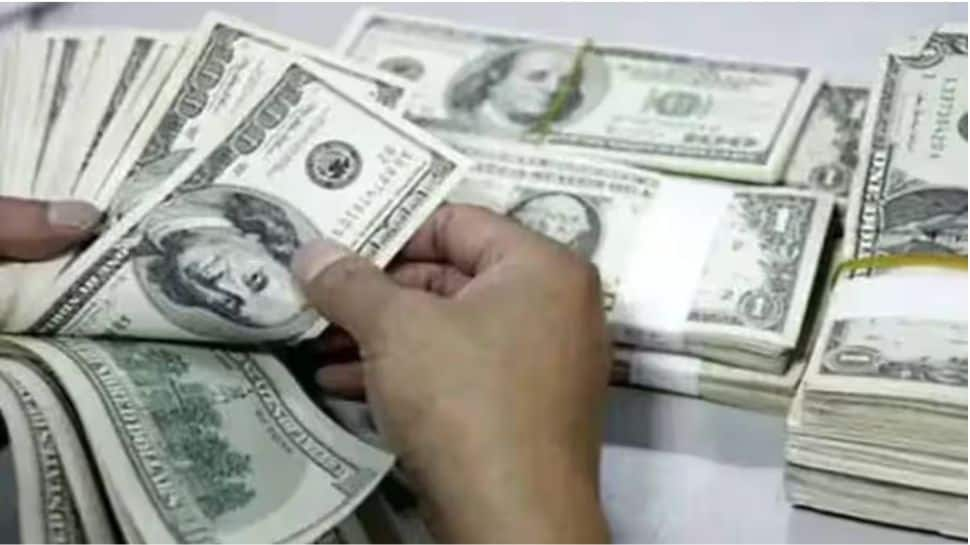Bill Nygren remains confident in Capital One despite recession fears
Oakmark Funds’ manager Bill Nygren is confident in Capital One even as prospects of further interest rate hikes from the Federal Reserve are rattling investors.
“For people that are pulling out their recession playbook based on the last two recessions, there’s a lot of concern about what will happen to charge offs in Capital One, but we take great confidence in how strong the market is for unskilled labor right now,” Nygren said on CNBC’s “Squawk on the Street.”
“People pay their credit card bills and their auto bills as long as they’ve got jobs,” he continued. “So we think that investors might be overestimating the weakness that you could see in not only Capital One, but the rest of the financial sector, if we do go through a moderate recession.”
Nygren said that he believes higher interest rates will have more of an impact on the housing sector, rather than credit card payments.
“I think that’s probably more of a risk for the housing sector where you’re looking at very long term interest rates,” said Nygren.
“For a credit card loan, change in in near-term rates just doesn’t change the payment all that much.”
Capital One stock
U.S. dividends reached an all-time high last year—but that might slow down in 2023
U.S. companies doled out a record high in dividends last year, but higher interest rates are expected to continue slowing dividend growth throughout 2023, according to the latest Janus Henderson Global Dividend Index.
Dividends rose to $574.2 billion, an increase of 7.6%, in 2022. Oil producers accounted for a third of this growth while financials were another third, according to a Wednesday note from Janus Henderson. U.S. oil companies saw soaring cash flows last year due to high energy prices. Financial giants Wells Fargo, Morgan Stanley and Blackstone were the largest contributors to the growth, the note said.
The telecommunications sector was the sole weak spot, the note said, pointing out that growth was significantly impacted after AT&T cut its annual dividend nearly in half to $1.11 per share in February of last year.
While dividends reached an all-time high, the firm said that U.S. dividend growth slowed in each successive quarter in 2022, dropping from 10.4% in the first quarter to 5.5% in the fourth quarter. The vast majority, or 94%, of U.S. companies raised or maintained their dividend payments last year.
Global dividends rose 8.4% to a record $1.56 trillion and slowed to 7.8% by the fourth quarter, the firm said, expecting that growth rate to down in the current year.
– Pia Singh
Stocks chop lower as 10-year yield pushes above 4%
The 10-year Treasury yield took another run at 4%, as stocks chopped lower in afternoon trading.
The 10-year was at 4.004% in mid-afternoon. The 10-year yield breached 4% for the first time since Nov. 10 in late morning trading, but backed off below that level temporarily. Yields move opposite price.
Traders have been watching the negative correlation between stocks and the benchmark 10-year’s move to the key 4% psychological level. Chart strategists say the level is not important resistance, but it is important in terms of the impact on investor sentiment.
Tech and growth stocks are particularly sensitive to moves in the 10-year yield. The Technology Select Sector SPDR Fund, which repesents the tech names in the S&P 500, was off 0.8%.
Bond strategists expect the 10-year yield to continue to rise, ahead of the Fed’s March 22 rate decision. Any strong inflation or even jobs data could be a catalyst for a move higher.
Michael Schumacher of Wells Fargo said the 10-year could easily reach 4.20% in the near term.
—Patti Domm
Stocks susceptible to a ‘potentially intense’ March pullback, says AXS Investments’ Bassuk
Stocks look “increasingly susceptible to a potentially intense” pullback in March, unless economic data weakens, corporate earnings show more consistent strength and geopolitical tensions start to calm (as with Russia and China), according to Greg Bassuk, CEO at AXS Investments.
“With market volatility likely to persist in March as investors digest the pending release of new economic, corporate and geopolitical data and developments, investors would be prudent to brace for a near-term market rollercoaster as both Wall Street and Main Street process and position for the months ahead,” he said.
Economic data remains the investor narrative for March with all eyes laser focused on February’s inflation print.
“Just as the February sell-off was sparked by the strong January jobs report and a multitude of robust growth and inflation readings, Wall Street and Main Street eagerly await upcoming economic data to decipher the trajectory of the job market and inflation to gauge the likely actions of the Fed in March and throughout 2023,” he added.
— Tanaya Macheel
Chinese EV maker Nio slides on earnings miss
U.S.-listed shares of Nio slid about 4% after the Chinese electric vehicle maker reported a wider-than-expected operating loss of 6,736.1 million Chinese Yuan ($976.7 million U.S.) for the fourth quarter. That’s a much wider loss from the year prior.
“While vehicle revenue of Rmb14.8bn (+24% QoQ) came in largely in-line, vehicle gross margin of 6.8% (down 9.5ppt QoQ) surprised on the downside. The company attributed the drastic margin contraction to: 1) inventory provisions; 2) accelerated depreciation on production facilities; and 3) losses on purchase commitments to suppliers for NT1.0 models,” said Morgan Stanley analyst Tim Hsiao, who has an overweight rating on the stock.
The automaker also provided weak guidance, Citi analyst Jeff Chung pointed out. He has a buy rating on the stock, but emphasizes it is a high-risk investment “given the company’s start-up positioning, early stage of product deliveries, other operational risks, the risk of original financial investors selling stakes in the future,as well as the shares’ relatively brief trading history.”
UBS, on the other hand, is neutral on the stock, calling it “our least preferred EV name under our coverage.”

Nio dipped on earnings miss Wednesday.
David Einhorn says investors should be ‘bearish on stocks and bullish on inflation’
Greenlight Capital’s David Einhorn said Wednesday he’s keeping his negative stance on the stock market as inflation and interest rates could surprise to the upside.
“I think we should be bearish on stocks and bullish on inflation,” Einhorn said on CNBC’s “Halftime Report.” “I think we’re in a policy now, which is probably pretty good for Main Street, but it’s going to be difficult and increasingly difficult for financial assets.”
Einhorn just scored “an exceptionally good year” with a 36.6% return in 2022, thanks in part to his short position in a slew of innovative technology stocks like those touted by growth investor Cathie Wood.
— Yun Li
10-year Treasury yield taps key level, triggers stock move
The 10-year Treasury yield briefly crossed above 4% for the first time since Nov.10 but backed off in late morning trading.
The 4% level is viewed as a key psychological milestone for investors, and stocks fell to the lows of the day after the move. The S&P 500 has since reversed much of those losses, and the 10-year was at 3.96% at midday.
“As the yield backed off, stocks lifted a little bit so you still have this direct correlation everytime the 10-year makes a new weekly high. Equities don’t like it,” said Scott Redler, partner with T3Live.com.

10
S&P and Nasdaq trade lower midday
March is off to a cloudy start, with the S&P 500 and Nasdaq Composite trading lower midday, continuing February’s losses.
As of noon ET Wednesday:
- Dow Jones Industrial Average: up 48 points, or 0.1%
- S&P 500: down 0.2%
- Nasdaq Composite: down 0.4%
The 10-year U.S. Treasury yield briefly touched 4.006%, crossing the 4% level for the first time since November. Yields across the board extended gains, putting pressure on stocks.
– Pia Singh
Number of stock market bulls tumbles in latest Investors Intelligence newsletter survey
The percentage of bulls in the latest weekly survey of financial newsletter editors slid to 38.4% from 44.4%, Investors Intelligence said.
Newsletter bullishness ended February about 10% below their recent peak in January, II said, adding that, “as contrarians, we view [the] shift as positive, suggesting that the fully invested stance seen at market tops is not close, and there is lots of sideline cash that is still available for buying stocks.”
The degree of bearishness rose to 28.8% from 26.4% a week earlier, while the number of advisers believing in a near-term stock market correction widened to to 32.8% from 29.2%.
The expanding number of newsletters arguing for a correction at the same time as the stock market is weakening is a worrying condition, II said. Typically, the correction camp would expand when prices are rising, so the latest move “suggests at least some in this category may shift to long term bearishness…We are watching anxiously for their next reaction,” II said.
— Scott Schnipper
Tesla shares lower ahead of investor day
Tesla shares fell heading into the company’s investor day livestreamed from its Texas factory on Wednesday.
Many investors and analysts will be watching for updates on the company’s battery and energy business, along with progress on FSD Beta.
The move in shares comes as the electric vehicle maker on Tuesday said it plans to build a new plant in Mexico and just weeks after the company cut prices to fuel demand.
So far this year, Tesla shares have been on a tear, surging 67% after a 65% slump in 2022.

Tesla shares rise heading into investo day
JPMorgan downgrades Marqeta shares
It’s time for investors to step away from card issuer Marqeta, according to JPMorgan.
The firm lowered its rating for Marqeta to neutral from overweight. It also slashed its price target to $6 from $9. The new price target implies only a 3.4% upside from Tuesday’s close price.
“While we like the strategic value and long-term operational improvements being put in place at Marqeta, we feel it is time to move to the sideline,” analyst Tien-tsin Huang wrote on Wednesday in a client note.
CNBC Pro subscribers can read more about his downgrade here.

Marqeta stock
Manufacturing still in contraction, prices jump in February ISM reading
Manufacturing remained in contraction during February as production and new orders slowed, the Institute for Supply Management reported Wednesday.
The closely watched ISM Manufacturing Index registered a 47.7% reading, representing the percentage of companies reporting expansion. A reading below 50% represents contraction.
Economists had been looking for a headline reading of 47.8%, according to Dow Jones.
In the details, new orders rose but remained in a pullback at 47%, while the production index edged down to 47.3%. Importantly, inflation re-emerged in the sector, with the prices index jumping 6.8 percentage points to 51.3%. Employment nudged down into contraction territory with a 49.1% reading.
—Jeff Cox
Fed’s Kashkari open to higher rate hike at March meeting
Minneapolis Federal Reserve President Neel Kashkari said Wednesday that he’s open to the possibility of a larger interest rate increase at this month’s policy meeting, but hasn’t made up his mind yet.
“I’m open-minded at this point about whether it’s 25 or 50 basis points,” the central bank official said during an event in his home district.
A voting member on the rate-setting Federal Open Market Committee, Kashkari said the “dot plot” of individual members’ future expectations will be more significant than what’s decided at the March 21-22 meeting.
He noted that his “dot” was higher than most of the other FOMC members at the last meeting, when the committee stepped back the level of previous hikes to a quarter-point move. Kashkari indicated the he again is likely to tilt to the hawkish side in view of recent data that shows inflation remains high despite all the rate increases over the past year.
“At this point I have not decided what my dot is going to look like, but I lean towards continuing to raise further. I would continue to push up my policy path,” he said.
—Jeff Cox
Stocks open lower to begin a new trading month
U.S. equities fell on Wednesday, the first day of March.
The Dow Jones Industrial Average dipped 64 points, or 0.2%. The S&P 500 fell 0.2%, and the Nasdaq Composite hovered under the flatline.
Wall Street analysts remain positive on Rivian after mixed earnings
The outlook for Rivian Automotive remains positive even after the electric vehicle startup reported mixed fourth-quarter earnings, and issued a lackluster production outlook, according to Wall Street analysts.
Rivian shares dropped more than 8% in premarket trading Wednesday after the firm posted a revenue miss in its latest quarter, according to consensus estimates from Refinitiv. It also reported a smaller-than-expected loss.
Meanwhile, Rivian’s 2023 vehicle production guidance of 50,000 vehicles was below the estimates of several Wall Street analysts.

Rivian shares 1-day
Even so, analysts on Wall Street maintained a buy rating on the stock, according to consensus estimates on Refinitiv. Their average price target of $37.05 suggests Rivian shares can surge more than 90% from Tuesday’s close.
Still, for Goldman Sachs’ Mark Delaney, the results warranted a neutral rating for the stock, saying lower operating expenditures and strong demand offset the slower production figures. He has a 12-month price target of $18 on the stock. Rivian shares closed Tuesday at $19.30.
“While we continue to expect the company to have improved traction long-term, we would look for more visibility on an improved production ramp and timeline to profitability to be more positive on the stock and maintain our Neutral rating,” Delaney wrote to clients on Wednesday.
Meanwhile, Bank of America’s John Murphy maintained a buy rating on the stock, saying Rivian is “still in right place/time with right product/strategy.” He has a $50 price objective, implying shares could soar more than 150% from Tuesday’s close.
“[The] company is one of the most viable among the start-up EV automakers and also a relative competitive threat to incumbent OEMs (and possibly to other automotive-related verticals),” Murphy wrote Wednesday.
— Sarah Min
Futures turn negative as bond yields rise higher
U.S. equity futures fell into the red as bond yields continued to climb higher.
The benchmark 10-year Treasury yield was up by 3 basis points at 3.947%, after it climbed as high as 3.983% on Tuesday, reaching levels last seen in the first half of November.
The yield on the 2-year Treasury was last trading at 4.839% after rising by just over 4 basis points. The 1-year yield climbed more than 3 basis points to over 5%.
— Tanaya Macheel
Stocks making the biggest moves premarket
Here are the companies making headlines before the bell on Wednesday:
- Rivian — Shares of the electric vehicle maker tumbled more than 9% after the company posted mixed fourth-quarter results and an underwhelming production outlook.
- Sarepta Therapeutics — The biotech stock soared by 17% after Morgan Stanley upgraded Sarepta shares to overweight from equal weight.
- Novavax — Shares dropped 25.4% in early morning trading after the vaccine developer said that “substantial doubt exists regarding our ability to operate as a going concern” through the next year.
Click here to read more companies making moves before the open.
— Pia Singh
Kohl’s sinks after reporting fourth-quarter loss

Kohl’s fell after reporting fourth-quarter results
Kohl’s reported a loss of $2.49 per share on $5.78 billion of revenue. Analysts surveyed by Refinitiv had expected positive earnings of 98 cents per share on $5.99 billion of revenue. CEO Tom Kingsbury said in a press release that sales were pressured by the “ongoing inflationary environment.”
The company also said it expected sales to decline between 2% and 4% in 2023.
— Jesse Pound
Mortgage demand from homebuyers drops to a 28-year low
Mortgage rates moved higher again last week, pushing buyers back to the sidelines just as the spring housing market is supposed to be heating up.
Mortgage applications to purchase a home dropped 6% last week compared with the previous week, according to the Mortgage Bankers Association’s seasonally adjusted index. Volume was 44% lower than the same week one year ago, and is now sitting at a 28-year low.
Mortgage rates have moved 50 basis points higher in just the past month. Last February, rates were in the 4% range.
For more, read the full story here.
— Diana Olick, Tanaya Macheel
Morgan Stanley upgrades Sarepta
Morgan Stanley said Sarepta Therapeutics could rally more than 50% on the approval of a key drug.
“On SRPT’s 4Q earnings call, [management] highlighted recent commentary following the mid-cycle review of SRP-9001 suggesting that the FDA is comfortable with the surrogate endpoint and acknowledged no safety-related issues … The risk/benefit skews positive given the manageable safety profile,” Morgan Stanley said.
— Hakyung Kim
March market history
March is typically a strong month for the market, according to The Stock Trader’s Almanac. The Dow Jones Industrial average and S&P 500 gained, on average, 0.9% and 1.1% respectively for the month, making it the fifth-best month for the U.S. stock market.
It’s been quite a volatile month in recent years with the Dow dropping 13.7% in 2020 as Covid emerged and gaining 6.6% in 2021. Last year, the Dow gained 2.3% on the month.
There tends to be late-month weakness that eats away at some of the month’s early gains, according to The Stock Trader’s Almanac, as investors take profits into the end of the first quarter.
— John Melloy
UBS upgrades Procter & Gamble
Procter & Gamble could see big gains ahead, according to UBS.
“P&G has been the worst performing stock across our [home and personal care] coverage universe YTD, which is partially due to the unwind in the group but also concerns around the ability for P&G to deliver outsized EPS growth/positive revisions looking ahead,” UBS said in a note. “We view concerns on the latter as misplaced and believe an earnings inflection is on the horizon looking out to FY24.”
— Hakyung Kim
China economic data helping to boost markets
Strong data out of China boosted hopes the country’s economy was returning to growth after loosening up Covid lockdown rules. China’s official manufacturing purchasing managers’ index rose to 52.6 in February, a second-straight month of expansion and the fastest pace since April 2012.
Hong Kong’s Hang Seng index soared more than 4% in response to the data and U.S. futures were boosted overnight.

Dow Jones futures – 1-day
Rebecca Patterson is looking to defensives, T-bills for near-term market insurance
Rebecca Patterson, known for her earlier leadership at Bridgewater, is preparing for a near-term market downturn.
In order for the Federal Reserve to ease its interest rate-hiking campaign, Patterson said there needs to be a lot more economic weakness and inflation will likely need to be brought down to the Fed’s target level or below—both of those scenarios having “low probabilities.”
“I do think we’re looking at equity market downside later this year and I would be watching that interplay between the consumer, companies and the labor market, and, of course, the Fed and those borrowing costs,” Patterson, the former Chief Investment Strategist at Bridgewater Associates, said Tuesday on CNBC’s “Fast Money.”
The strategist added that the consumer is growing cautious, which she said could bode poorly for companies–increasing the risk of layoffs and hit on earnings–if they start spending less.
For near-term insurance, Patterson said she is investing in the six-month U.S. Treasury bill and is starting to invest modestly in defensive stocks. She noted that six-month Treasury yields rose to 5.14% on Tuesday, reaching its highest return rate since 2007.
Patterson published an op-ed on CNBC.com Tuesday about the three drivers she sees as potentially shaping the future of the U.S. economy.
— Pia Singh
How the major indexes performed in February
Tuesday’s closed marked the end of February’s trading month. Here’s how the three major indexes performed in the month:
That marks a turn from January’s rally as investors tried to shake off 2022’s downturn. February’s slide pushed the Dow below where it started the year, while the S&P 500 and Nasdaq Composite are still holding on to some of what each gained in January.
— Alex Harring
Stocks making the biggest moves after hours
These are the stocks making the biggest moves after the bell:
- First Solar — The solar stock gained 3.6%. The company reported a fourth-quarter loss of 7 cents per share compared with a 17 cent per-share loss forecasted by analysts, according to FactSet. Revenue came in line with expectations at $1 billion. The company issued full-year guidance that was ahead of expectations on per-share earnings and revenue.
- AMC Entertainment – Shares of the meme-stock darling slipped less than 1%. The company posted a wider-than-expected loss of 26 cents per share for the fourth quarter, compared to the 21 cent per-share loss forecasted by analysts polled by Refinitiv. AMC also reported fourth-quarter revenue of $991 million, while analysts anticipated $978 million in revenue.
- Novavax — The biotechnology company tumbled 24% after the company raised doubts about its ability to stay in business. The company lost $2.28 per share, much larger than the $1.01 per-share loss expected by analysts polled by FactSet. Revenue also came in below expectations at $357.4 million compared with $383.1 million anticipated.
— Alex Harring
Stock futures open down
The three major futures indexes opened in the red.
Nasdaq 100 futures led the way down, dropping 0.3%. Futures tied to the S&P 500 and Dow slid 0.2% and 0.1%, respectively.
— Alex Harring















































